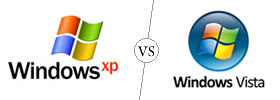Difference between HTML and HTML5
Key difference: HTML stands for HyperText Markup Language. It is a well known mark up language used to develop web pages. It has been around for a long time and is commonly used in webpage design. HTML5 is the fifth revision of the HTML standard. The core aims of HTML5 have been to improve the language with support for the latest multimedia. HTML5 aimed to address the variety of mixture of features introduced by various specifications by various browsers.
 HTML stands for HyperText Markup Language. It is a well known mark up language used to develop web pages. It has been around for a long time and is commonly used in webpage design. XML or Extensible Markup Language defines a set of rules for encoding documents in a format that can be read by both, human and computer.
HTML stands for HyperText Markup Language. It is a well known mark up language used to develop web pages. It has been around for a long time and is commonly used in webpage design. XML or Extensible Markup Language defines a set of rules for encoding documents in a format that can be read by both, human and computer.
HTML is written using HTML elements, which consist of tags, primarily and opening tag and a closing tag. The data between these tags is usually the content. The main objective of HTML is to allow web browsers to interpret and display the content written between the tags. The tags are designed to describe the page content. HTML comes with predefined tags. They allow one to insert images, text, videos, forms and other pieces of content together into a cohesive webpage.
Elements of HTML are the basic building blocks of all websites. HTML allows images and objects to be embedded in the webpage. It can also be used to create interactive forms. HTML also provides the means to create structured documents. It does this by denoting structural semantics for text such as headings, paragraphs, lists, links, quotes and other items. However these days, web pages are rarely designed using only HTML. HTML allows for the programmer to embed scripts written in languages such as JavaScript, which many often do. This changes the look and behavior of the HTML web pages.
 HTML5 is the fifth revision of the HTML standard. The core aims of HTML5 have been to ‘improve the language with support for the latest multimedia while keeping it easily readable by humans and consistently understood by computers and devices, such as web browsers, parsers, etc.’ HTML5 supercedes HTML 4, as well as XHTML 1 and DOM Level 2 HTML. Additionally, as of December 2012, HTML5 is W3C Candidate Recommendation.
HTML5 is the fifth revision of the HTML standard. The core aims of HTML5 have been to ‘improve the language with support for the latest multimedia while keeping it easily readable by humans and consistently understood by computers and devices, such as web browsers, parsers, etc.’ HTML5 supercedes HTML 4, as well as XHTML 1 and DOM Level 2 HTML. Additionally, as of December 2012, HTML5 is W3C Candidate Recommendation.
HTML5 aimed to address the variety of mixture of features introduced by various specifications by various browsers. It also aimed to address the many syntax errors in existing web documents. Additionally, it attempts to define a single markup language that can be written in either HTML or XHTML syntax. It is also backward compatible with the previous HTML versions.
The various changes in HTML5, as compared to previous versions:
- HTML5 includes detailed processing models to encourage more interoperable implementations.
- HTML5 extends, improves and rationalises the markup available for documents.
- HTML5 introduces markup and application programming interfaces (APIs) for complex web applications.
- HTML5 is a potential candidate for cross-platform mobile applications.
- HTML5 makes it easy to include and handle multimedia and graphical content on the web without having to resort to proprietary plugins and APIs.
- HTML 5 contains much better support for media, such as, audio and video tags.
- In HTML5, JS GeoLocation API helps in identifying location.
- HTML5 defines detailed parsing rules, including error handling.
- HTML5 defines an HTML syntax that is compatible with HTML4 and XHTML1 documents published on the Web.
- HTML5 syntax is not compatible with the more esoteric SGML features of HTML4, such as processing instructions and shorthand markup.
- HTML5 can use the XML syntax.
- New features of HTML5 were based on HTML, CSS, DOM, and JavaScript.
- HTML5 has better error handling.
- HTML5 has reduced need for external plugins, like Flash.
- HTML5 has more markup to replace scripting
- HTML5 is device independent.
- HTML5 has the canvas element for drawing.
- HTML5 has better support for local offline storage.
- HTML5 has new content specific elements, like article, footer, header, NAV, section.
- HTML5 has new form controls, like calendar, date, time, email, URL, search.
- HTML5 has new parsing rules.
- HTML5 is oriented towards flexible parsing and compatibility
- HTML5 is not based on SGML.
- HTML5 has the ability to use inline SVG and MathML in text/html.
- HTML5 has new attributes, such as, charset (on meta), and async (on script).
- HTML5 has global attributes that can be applied for every element, such as id, tabindex, hidden, data-*
- HTML5 does not contain deprecated elements, such as acronym, applet, basefont, big, center, dir, font, frame, frameset, isindex, noframes, strike, tt
Image Courtesy: teamtreehouse.com, w3.org









Add new comment